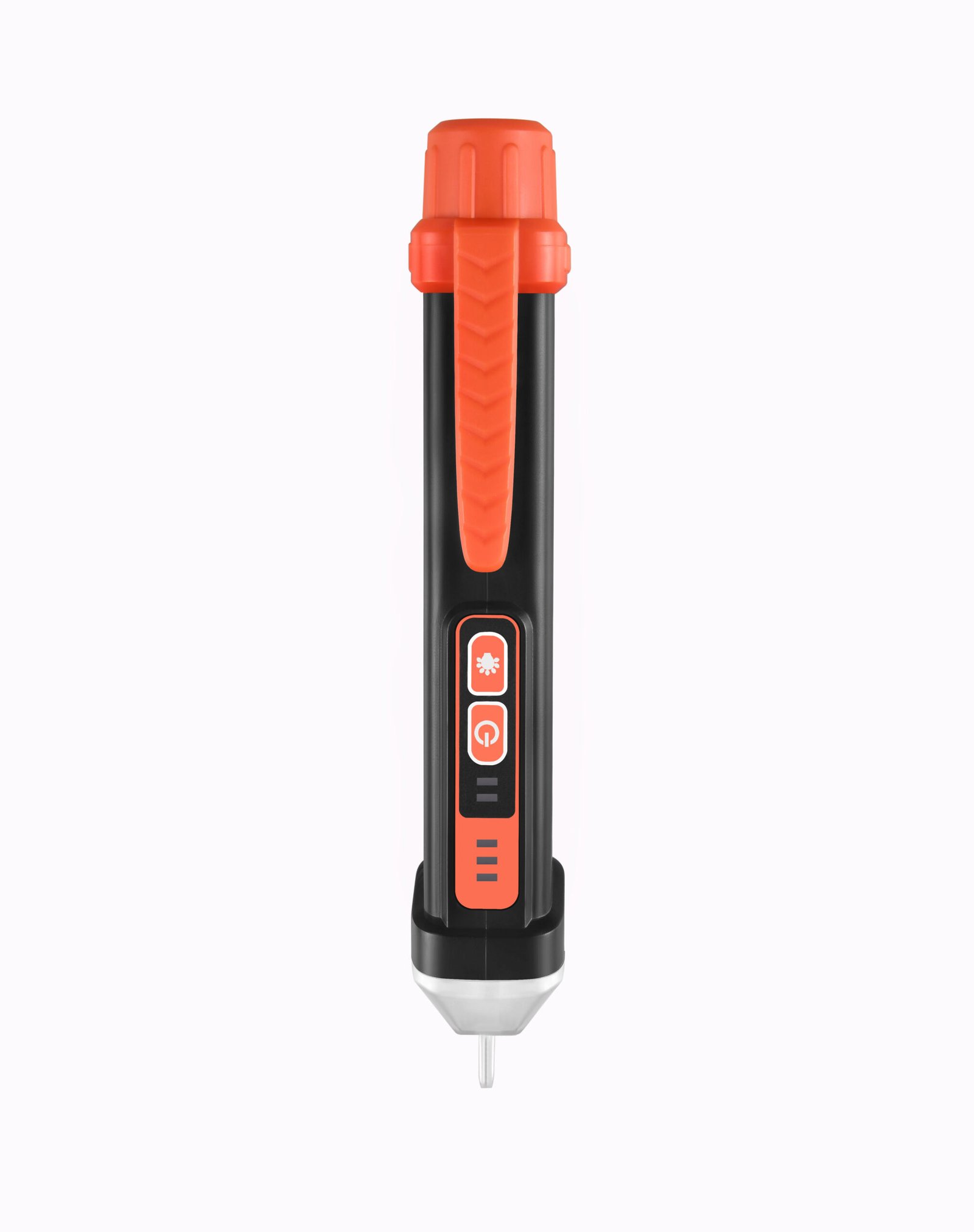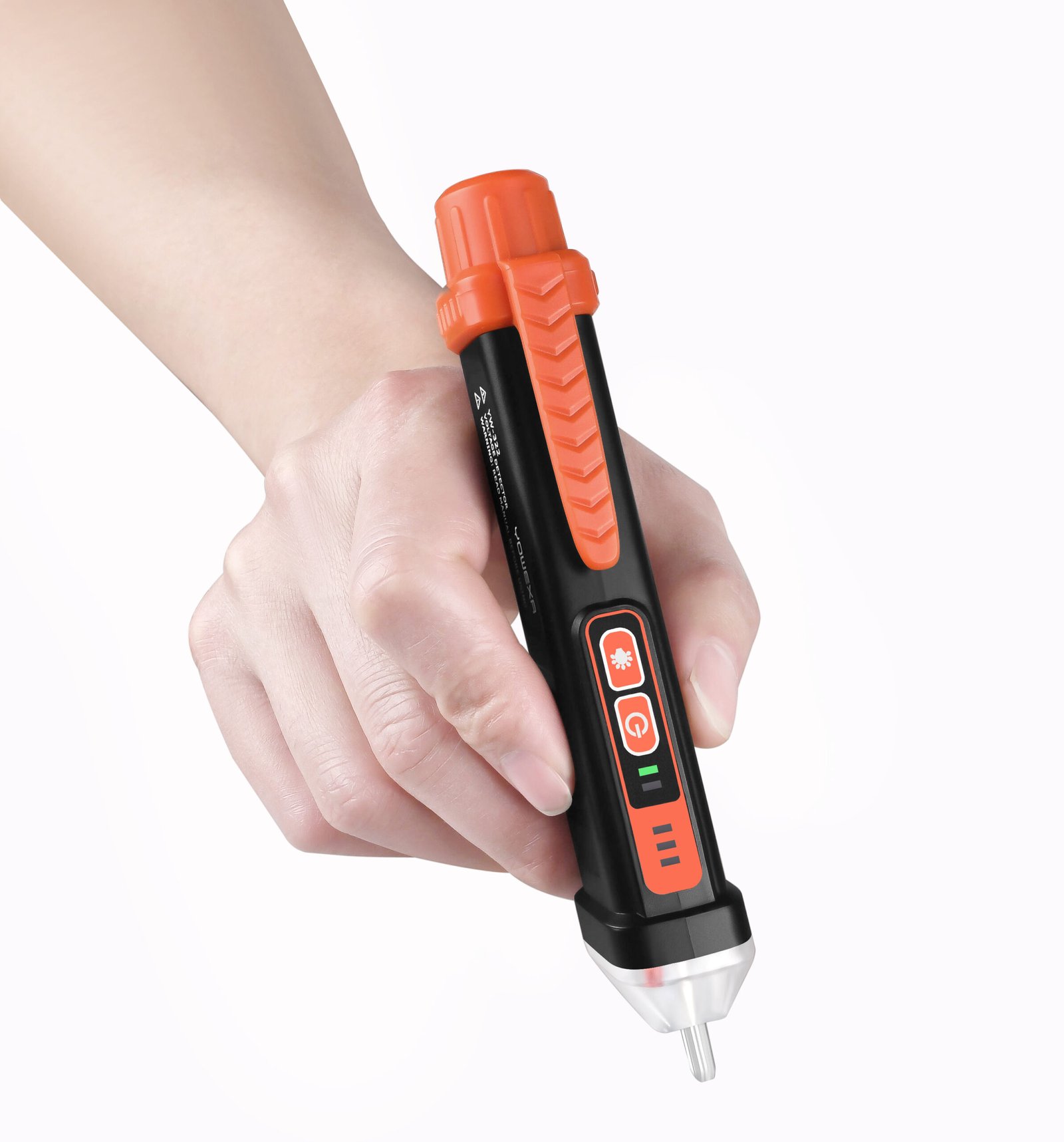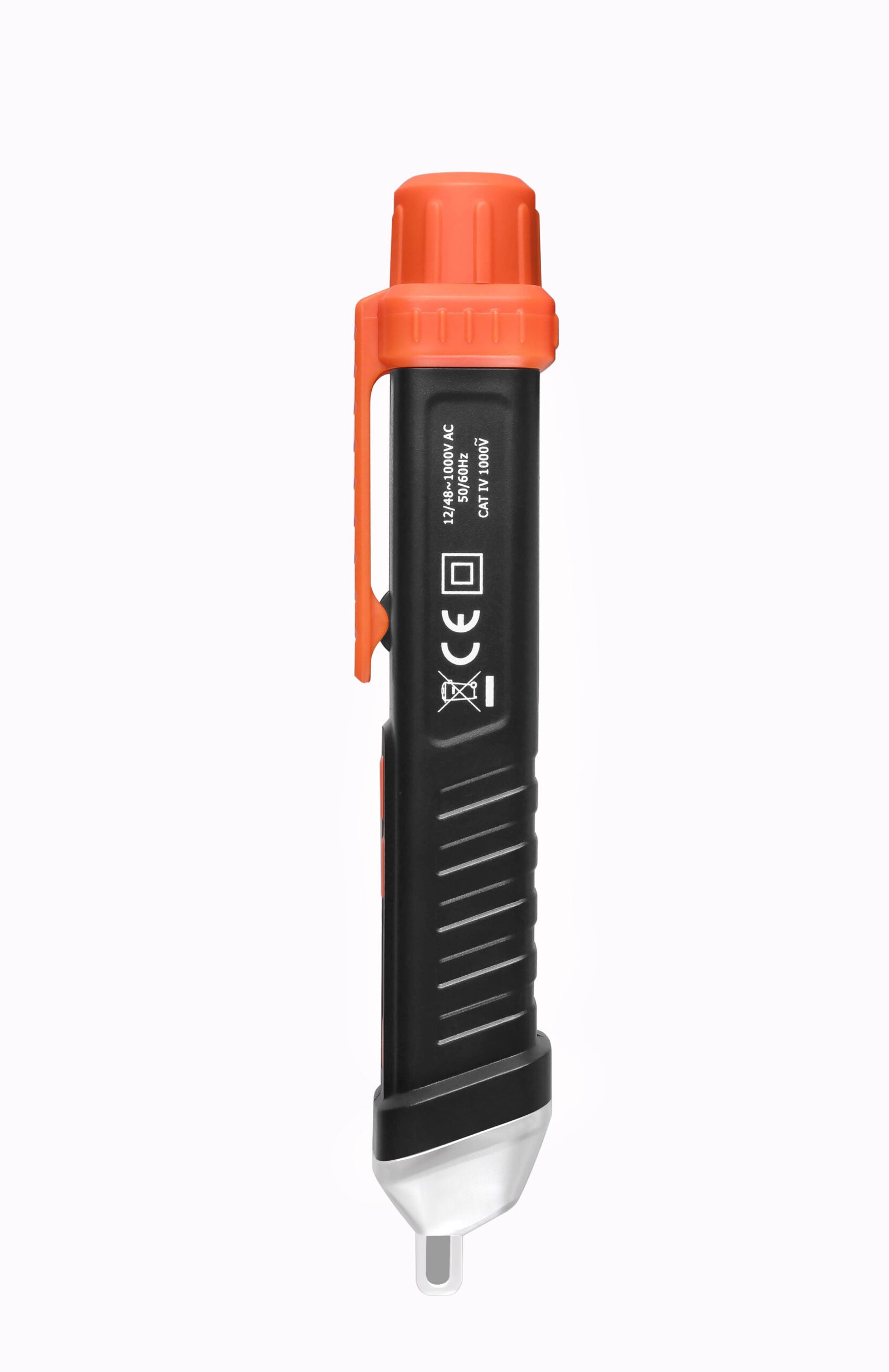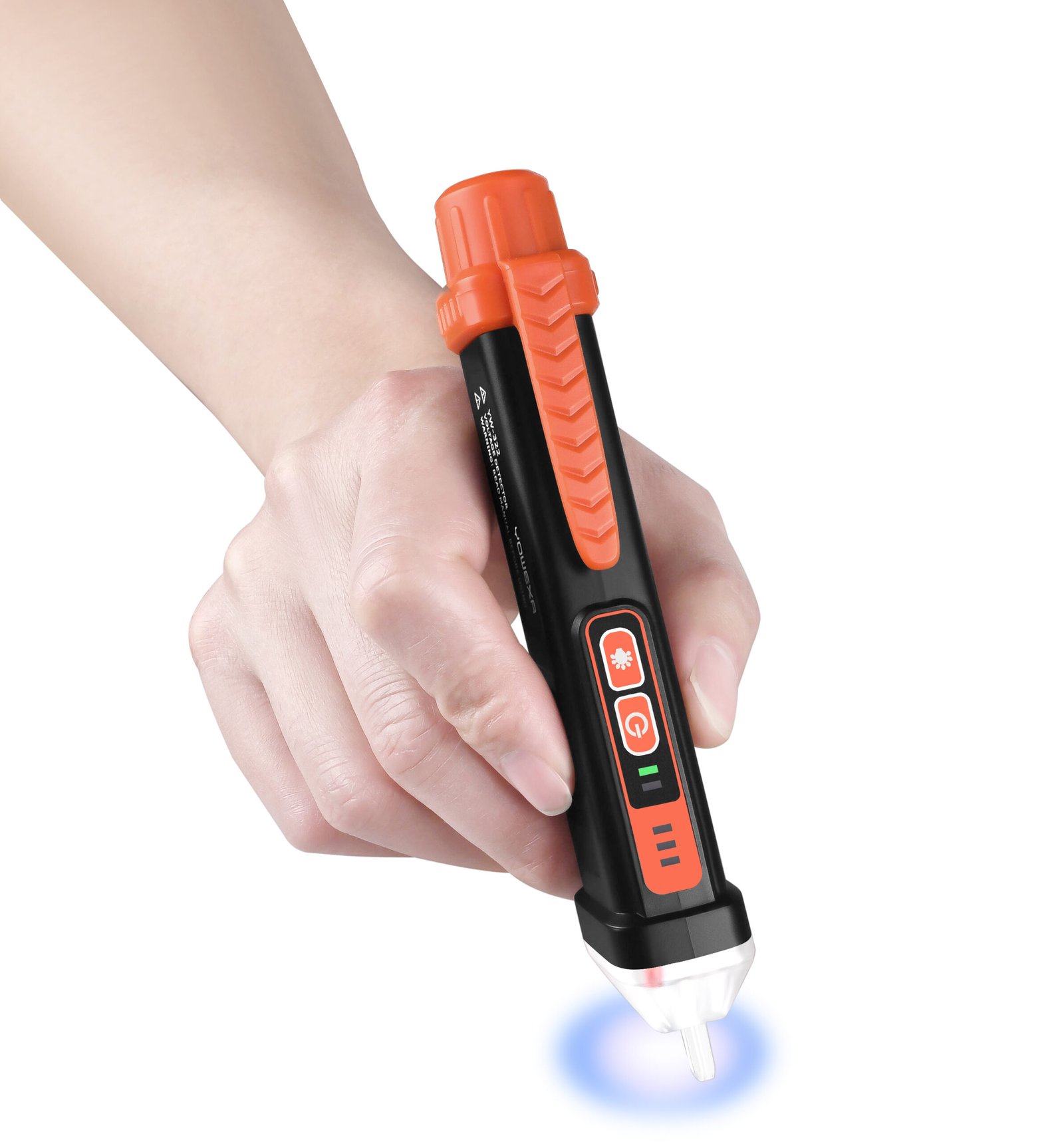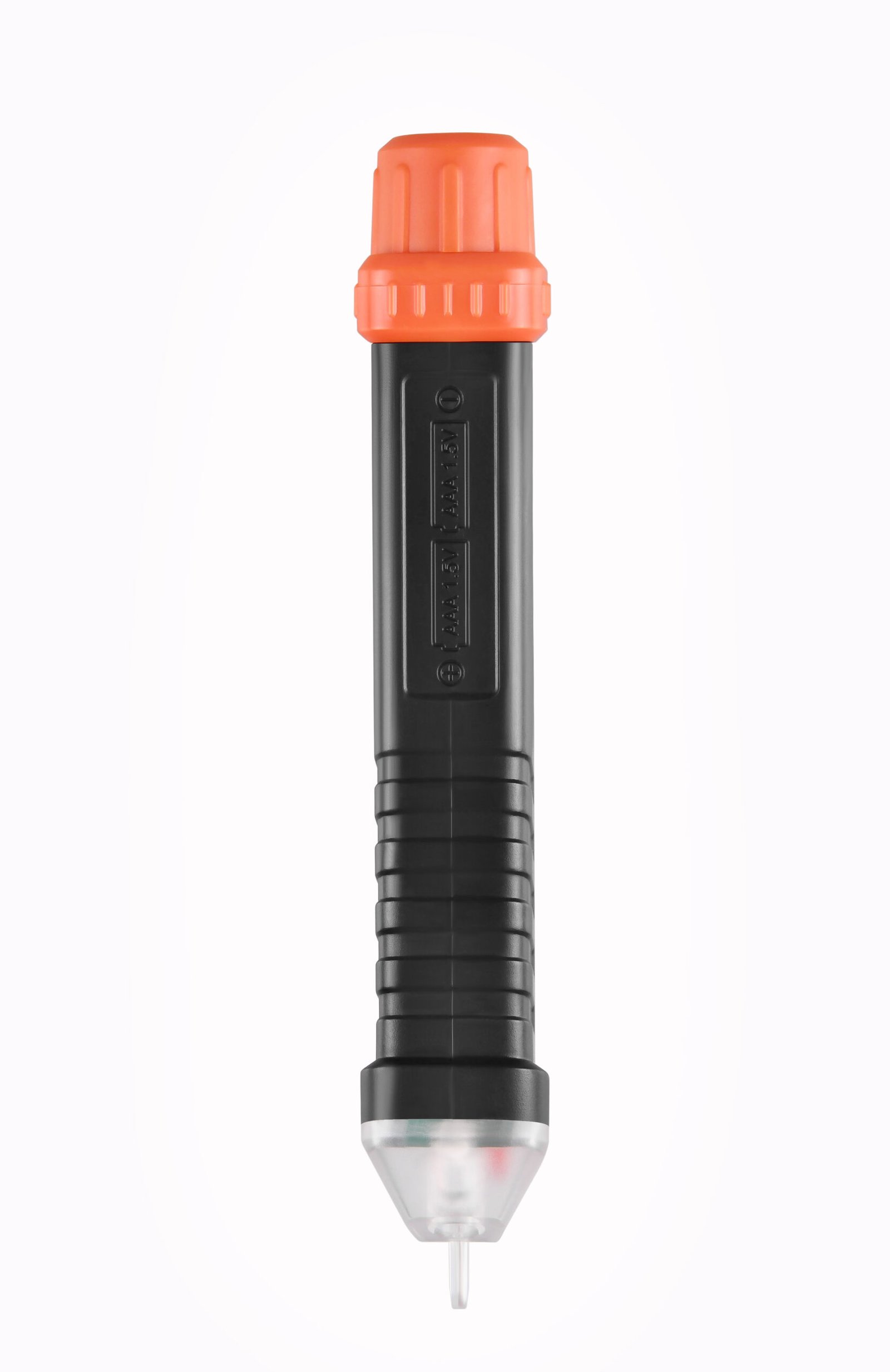Non-contact Voltage Tester LV-300
High sensitivity: about 12~1000V
Low sensitivity: about 48~1000V
Frequency: 50Hz/60Hz
Alarm Mode: sound and light alarm
NCV Sensitivity: 2 types (high and low)
Description
- LV-300 is an instrument used to detect whether objects are charged and can be used for industry, electricity, factories and home, etc.
- The LV-300 is a contactless marker with high strength transparent cover at the probe end. When testing, the tester as long as the probe close to the object, can measure whether the object is charged. This detection method without contact with live objects can greatly protect the personal safety of the inspectors.
- LV-300 has two high and low sensitivity adjustable and can meet the detection needs of different scenarios. The LV-300 also supports audible-optical alarms. During the detection, the instrument can light the signal intensity lamp and sound different frequencies according to the intensity of the voltage signal. Compared with the single optical alarm of the contact measuring pen, the LV-300 audio-optical synchronous alarm method is more obvious.
- The LV-300 has LED lights that allow inspectors to find circuits in dark environments and also serve as an emergency use as a flashlight.
- LV-300 has a pen design for easy to carry.
FEATURES:
- Non-contact testing
- Adjustable sensitivity
- Identifiable zero-fire line
- Breakpoint find
- Sound and light alarm
- LED lighting
- Automatic shutdown
- Low battery alarm
Datasheet
|
Model |
LV-300 |
|
AC voltage range |
About 12~1000V(High sensitivity); About 48~1000V(Low sensitivity) |
|
Frequency |
50Hz/60Hz |
|
Alarm mode |
Sound and light alarm |
|
NCV sensitivity |
2-Type(High, Low) |
|
Operating temperature |
0~40℃ |
|
Storage temperature |
-10~50℃ |
|
Elevtitude |
<2000m |
|
Safety level |
CE; CAT.III 1000V; CAT.IV 600V |
|
Power supply |
2 pcs of 1.5V AAA alkaline batteries |
|
Dimensions |
151*25*28mm |
|
Material |
ABS |
|
Weight |
About 29g(No battery) |
Video
Video
User Manual
FAQ
1-Can I customized with own logo?
Quick Compare
Parametric filtering: From specs to selection.

